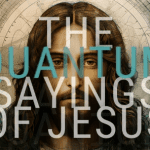by Daniel White Hodge
R3 Contributor
Hip Hop is a voice: a voice that openly speaks for the marginalized, the poor, the downtrodden, and those living in oppressive conditions. Hip Hop is an urban sub- and co-culture that seeks to express a lifestyle, attitude, and/or urban individuality. Hip Hop rejects Eurocentric culture and seeks to increase a social consciousness along with a racial/ethnic pride. Hip Hop is also a musical genre that uses rap music as a vehicle to send and fund its message of social, cultural, and political resistance to dominant structures or norms. Thus, rap music is the primary medium of Hip Hop culture that brings definition, value, understanding,and appreciation to the social isolation, economic hardships, political demoralization, and cultural exploitation endured by most ghetto-poor communities. Rap and Hip Hop captures and esteems the ghetto-poor existence, located within many urban enclaves, as valid and real to all ethnic minorities and poor whites. Within this discourse, there is something larger at work: a fundamental attempt to make God more accessible to a people who have been, in large part, ignored by many religious and spiritual entities.
Christina Zanfagna, an ethnomusicologist who studies Hip Hop and religion, claims,“Mainstream hip-hop percolates with unlikely and multifaceted religious inclinations. Despite its inconsistent relationship to organized religion and its infamous mug of weed smoking,drug pushing, gun slinging, and curse spewing, rap music is not without moral or spiritual content…religious messages have always been delivered through a vast array of sounds.” HipHop is, simply put, a contextualized form of manufacturing and manufactured religious discourse that gives meaning and identity from within and for the people who are its listeners. Artists, such as Tupac, act as natural theologians who interpret scripture and comment on it as a T.D. Jakes or a Joel Osteen would do for their constituents; however, HipHop pushes past a socially constructed traditional blonde, blue-eyed, Jesus because that form of Jesus cannot relate to the experience of the urban Hip Hopper, and asks for a Jesus that “smokes like we smoke, drinks like we drink, and acts like we act” – a Jesus that “we can relate to in the ‘hood.” While most American evangelicals are accustomed to these socially constructed depictions of Jesus, these types of Christological images do not relate to HipHoppers in the urban setting. These individuals need a supreme being that is both contextual and relatable, given their nefarious and contentious conditions. This type of contextual Jesus also questions authority, seeks to increase social consciousness, validates and acknowledges that social isolation is valid and real to all in the ‘hood, and every now and then “puts a footin someone’s ass to tell a muthafucka he real.”
In this paper, I assert that within the profanity and blasphemy, something much morecomplex is at work: rappers who are wrestling with meanings of life, death, and ultimatelythe quest for heaven. As an example, I use Jon Michael Spencer’s framework of theomusicology for a close textual analysis of “Black Jesuz” by Tupac Shakur and TheOutlawz. I argue that sensationalized images of Jesus are the missing pieces that mediate thegrowing gulf between traditional Christianity and Hip Hop culture.
Read the rest here














